Have you ever heard a strange clunking sound from your Audi Q5 front suspension while driving? These sounds may be annoying and signs of problems that could make your car less safe and inefficient. The lower ball joint is a crucial but often forgotten part that is usually blamed for these problems.
We’ll be going into great detail about the lower ball joint in this blog post, which is part of the Audi Q5’s suspension system. This component is pivotal — no pun intended — to ensure smooth steering and stable handling. We’ll show you how to spot the signs of a worn-out lower ball joint, explain why it’s important, and walk you through the steps to properly assess and fix the problem. Our goal is not only to get rid of those annoying suspension noises but also to make your Audi last longer and be more comfortable to drive.
This comprehensive guide is designed for experienced do-it-yourselfers and those considering professional help. Remember, promptly addressing suspension noises can keep your Audi Q5 running smoothly and save you from costly repairs. By taking action now, you’re ensuring your ride is as safe and enjoyable as possible and investing in the long-term performance of your Audi.
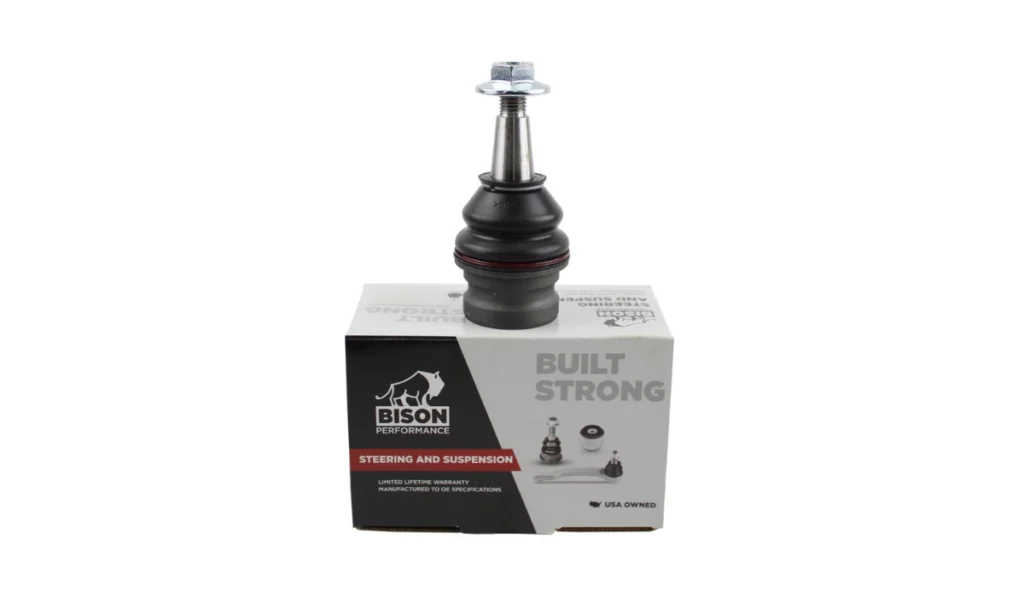
Audi Q5 front lower ball joint from BISON PERFORMANCE
Audi Q5 Lower Ball Joint — Explained
The lower ball joint is a key turning point in the suspension system of your Audi Q5. It works a lot like a hip joint in a person. It links the wheel hub to the rest of the suspension. This lets the wheels move smoothly and safely while adjusting for the angles when you steer and when the road slopes. This small but important part keeps your car’s wheels in contact with the road and stabilizes the ride.
Symptoms of Wear
Identifying the signs of wear early can prevent further complications. Here are some common indicators that your Audi Q5’s lower ball joints may need attention:
Clunking Noises — A common first symptom; if you hear clunking sounds from the front suspension when driving over bumps or making sharp turns, it could indicate a worn ball joint.
Vibration — Worn ball joints can cause vibrations that may be felt in the steering wheel, especially at higher speeds.
Uneven Tire Wear — If the ball joint fails, it can lead to alignment issues, resulting in uneven tire wear.
Loose or Wandering Steering — A compromised ball joint can affect steering precision, making the car feel loose or causing it to wander on the road.
Risks of Ignoring Symptoms
Neglecting these warning signs can lead to serious consequences, including:
Increased Wear on Tires and Suspension — As the ball joint deteriorates further, it puts additional strain on tires and other suspension components, accelerating their wear.
Loss of Control — The ultimate risk of a severely worn ball joint is that it could break completely, leading to a loss of control of the vehicle and posing a serious safety risk.
By identifying these symptoms and addressing them promptly, you can maintain the performance and safety of your Audi Q5, ensuring it continues to perform at its best on all your road adventures. Next, we’ll guide you through the process of inspecting the lower ball joint to assess its condition accurately.
How long do lower ball joints last?
Lower ball joints are durable components, but their lifespan can vary based on driving conditions, road quality, and vehicle usage. Typically, issues with lower ball joints can manifest as early as 50,000 miles, especially if the vehicle is frequently driven on rough or uneven roads or heavily loaded.
Regular maintenance and inspections are crucial to catch early signs of wear before they lead to more severe problems. For most drivers, monitoring the suspension system’s condition during regular service intervals will help ensure that any potential issues with the ball joints are addressed on time.
Experience the Best in Audi Parts with Amazing Savings
eEuroparts.com is your go-to online destination for a wide range of genuine Audi and OEM parts, all available at exceptionally competitive prices. Our commitment is to equip each Audi enthusiast with superior auto parts, eliminating the burden of high maintenance costs.
Our extensive inventory is intentionally selected to align with your Audi’s distinctive requirements, promising an exact fit and adherence to OEM norms. With eEuroparts.com, expect to make impressive savings without compromising the quality of your parts, making us the top pick for Audi DIYers who demand the best value and steadfast reliability.
How to Inspect the Lower Ball Joint on an Audi Q5
Properly inspecting the lower ball joint on your Audi Q5 is crucial in identifying potential issues before they lead to more significant problems. Here’s how you can conduct a thorough inspection:
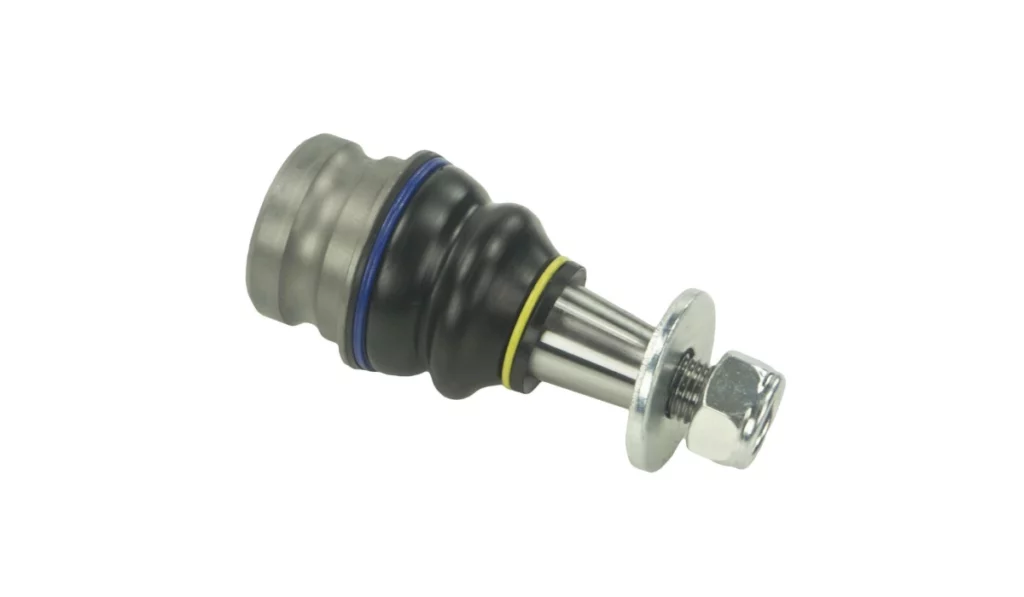
Audi Q5 front lower ball joint from MEVOTECH
Preparation
Safety First — Ensure the vehicle is parked on a level surface and the parking brake is engaged. Using wheel chocks, secure the wheels that will remain on the ground to prevent the vehicle from rolling. Wear safety goggles and gloves to protect against dirt, grease, and any unexpected movement of tools or vehicle parts.
Lift the Vehicle — Using a hydraulic jack, carefully lift the side of your Audi Q5 where you want to inspect the ball joint. Always use jack stands to support the vehicle securely while working underneath it. Never work under a car supported only by a hydraulic jack. Always use jack stands!
Tools Required for Inspection
- Safety goggles
- Working gloves
- Hydraulic jack
- Jack stand
- Shop towel or rags
- Medium-sized pry-bar
- Inspection light
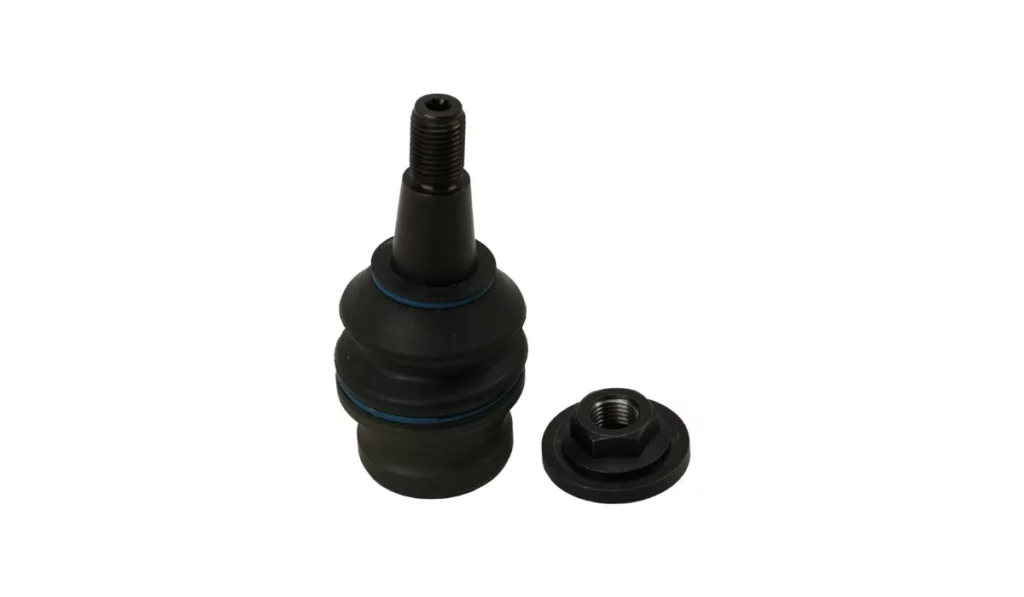
Audi Q5 front lower ball joint from MOOG
Visual Inspection
Inspect for Leaks — When worn out, ball joints may leak grease. Check for wetness or grease residue around the joint.
Clean the Area — Before further inspection, clean around the ball joint to remove any dirt or debris that might obscure your view.
Check for Physical Damage — Look for any visible signs of damage or excessive wear on the ball joint. This could include cracked or torn rubber boots, which allow contaminants to enter the joint and cause premature wear.
While you are at it, inspect other suspension components as well to determine their general condition. We have covered this in our detailed guide about Audi Q5’s common suspension issues. Head there to learn more!
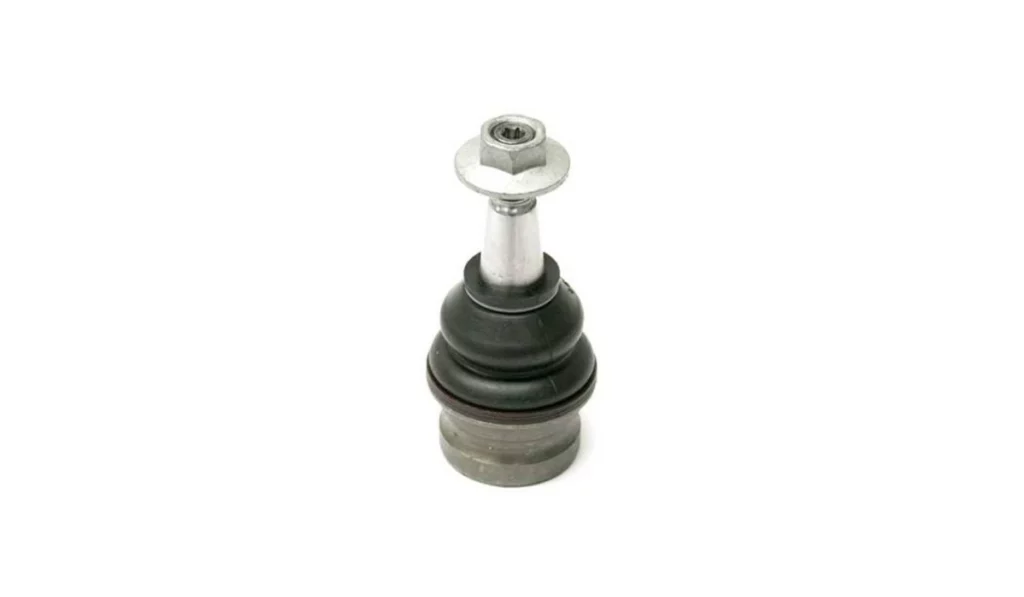
Audi Q5 front lower ball joint from LEMFORDER
Testing for Play
Manipulate the Wheel — With the vehicle securely lifted, grasp the wheel at the top and bottom and try to rock it in and out. Excessive play in this motion can indicate a worn ball joint.
Use a Pry Bar — Place a pry bar above the lower control arm, under the tie rod, and slightly push down on it. This will force the ball joint to move vertically, and it will move if there is any play with it, indicating that it is worn.
If the ball joint shows signs of wear or damage during your inspection, it is advisable to prepare for its replacement. In the following section, we’ll guide you through the step-by-step process of replacing the lower ball joint, ensuring you can perform the task safely and effectively.
Can you still drive with a bad ball joint?
It is not recommended to drive with a bad ball joint. While you might be able to operate the vehicle with just added annoyance from the noise it creates, if the wear and tear on the ball joint is severe, there is a risk that the ball joint stud could separate from its housing.
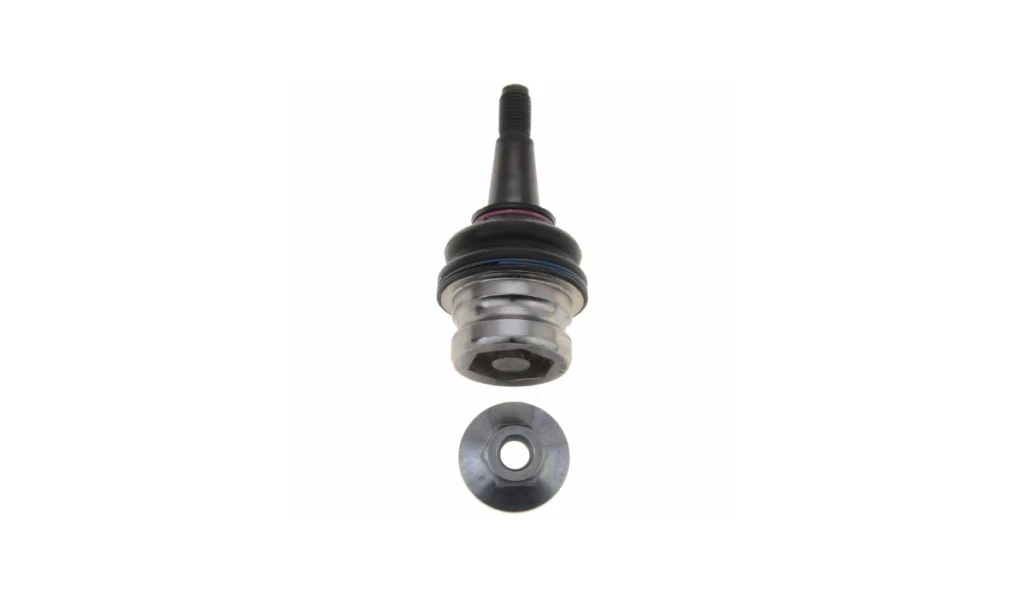
Audi Q5 front lower ball joint from TRW
Such a failure can damage your under chassis significantly and cause an accident by severely affecting your vehicle’s handling and control. Continuing to drive with a compromised ball joint puts your safety at risk and increases the likelihood of incurring more substantial repair costs due to additional damages.
Audi Q5 Lower Ball Joint — DIY Replacement Guide
Replacing the lower ball joint on your Audi Q5 can be a rewarding project that saves you money and enhances your understanding of your vehicle’s suspension system. Let’s gather our tools and get ready to restore the integrity of your Audi Q5’s suspension.
Tools Required for Replacement
In addition to the tools used while inspecting the lower ball joint, you’ll have to prepare other tools required for replacement. See the list below.
- Ratchet and socket set
- Combination spanner set
- Torx bit socket set
- Triple square bit socket
- Dead-blow hammer
- Chisel set
- Ball joint puller
- Bench vise
- Torque wrench
Safety is a Top Priority
Now that we are replacing the lower ball joints, additional safety precautions are needed. Ensure you use the right tools for the right job to protect yourself and your Audi Q5 from any mishap.
Removing wheels
Start by ensuring the car is on a jack stand while being worked on. Then, remove the front wheels by removing the hub cap and unscrewing the five lug nuts.
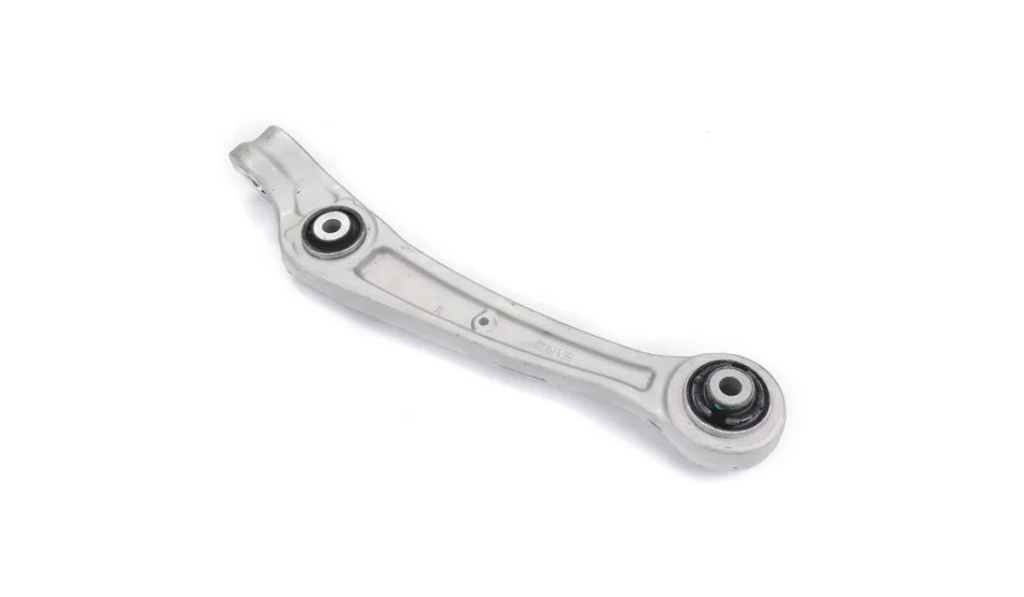
Removing Front Forward Lower Control Arm
To remove the front forward lower control arms, you must first remove the front underneath cover to access its mounting point. It is held by multiple Torx screws, and it needs to be pulled rearward for it to be removed.
Afterward, loosen and remove the two bolts attached to the lower control arm from the subframe and the strut. Some lower control arms are going to be equipped with a suspension level sensor, so undo the sensor arm on the control arm by removing its screw. Then, pry the unbolted lower control arm outward until it is disengaged from its mount.
Unscrew the pinch bolt on the wheel hub to loosen the base of the lower ball joint. Carefully slide a chisel between the gap to widen it and pull the base out of the wheel hub. You must carefully maneuver it to get it out, and it will be removed.
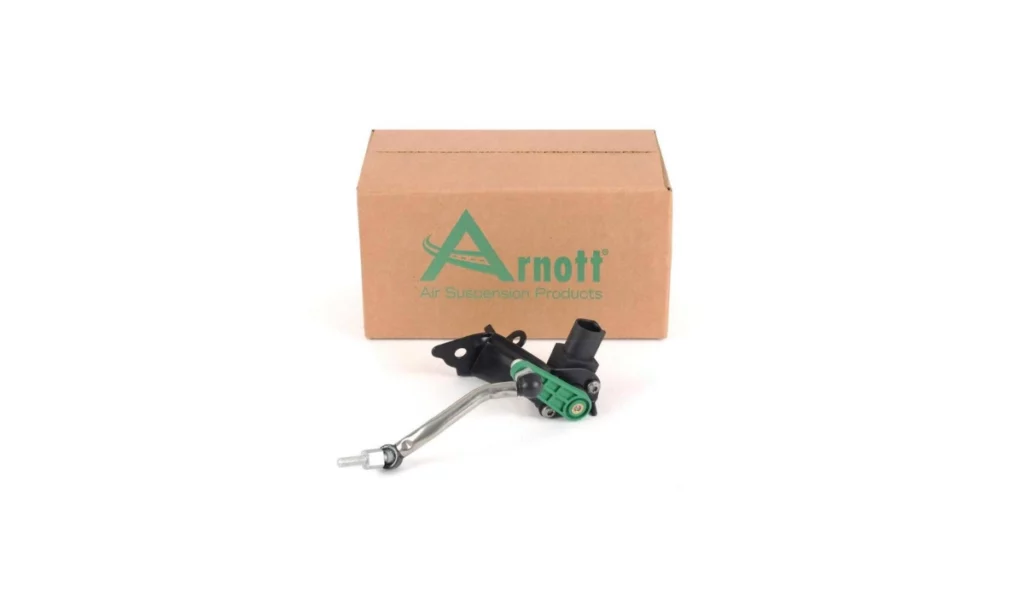
Replacing the Lower Ball Joint
Once the lower control arm with the ball joint is out, set it on a bench vice and remove the ball joint nut. Then, use the ball joint puller to remove it from the lower control arms. Be careful when removing the ball joint using its puller. If this is your first time doing this, you might be shocked by how loud it is when it is released!
Before installing a new ball joint on the lower control arm, inspect its bushings to ensure you are not fitting a new ball joint to a defective lower control arm. Remember, replacing all worn parts in one go is better than fixing one part at a time. This will save you time and money in the long run!
Tighten the new ball joint nut to 88 ft. lb (120 Nm) and install the lower control arm back to the wheel hub. The pinch bolt you removed must be replaced and tightened to 30 ft. lb (40 Nm). Then, position the control arm in its mounting position.
The lower strut bolt must be tightened to 66 ft. lb (90 Nm) +90°, while the mounting bolt needs to be tightened to 51 ft. lb (70 Nm) +180°. These bolts and nuts must be replaced as they are stretched during installation. The rest of the installation is just the reverse of the removal. Easy peasy, right?
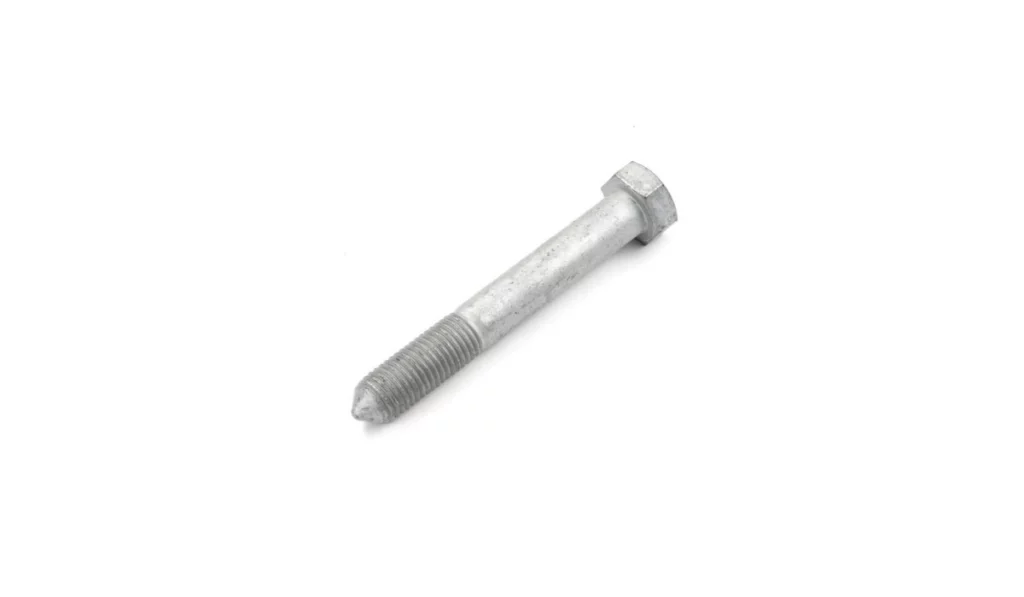
Genuine VW/Audi front lower strut bolt N10241202
Are lower ball joints expensive?
Lower ball joints for the Audi Q5 typically cost from $100 to $500 for the parts alone, making them a relatively affordable component considering their crucial role in your vehicle’s suspension system.
The cost can vary depending on the brand and the quality of the parts you choose. Opting for Genuine Audi or OEM parts can be more expensive initially but may offer better longevity and performance, potentially saving you money on future repairs.
It’s also important to consider the labor costs if you plan to have the ball joints professionally replaced. Labor costs vary widely based on geographical location and the service provider, but you can expect to pay 80$ to 200$ for the installation cost.
Preventing Lower Ball Joint Damage
Maintaining the lower ball joints in your Audi Q5 ensures the longevity and safety of your vehicle’s suspension system. Proactively caring for these components can prevent premature wear and avoid costly repairs.
Here are some effective strategies to help protect your lower ball joints and keep your suspension in top condition:
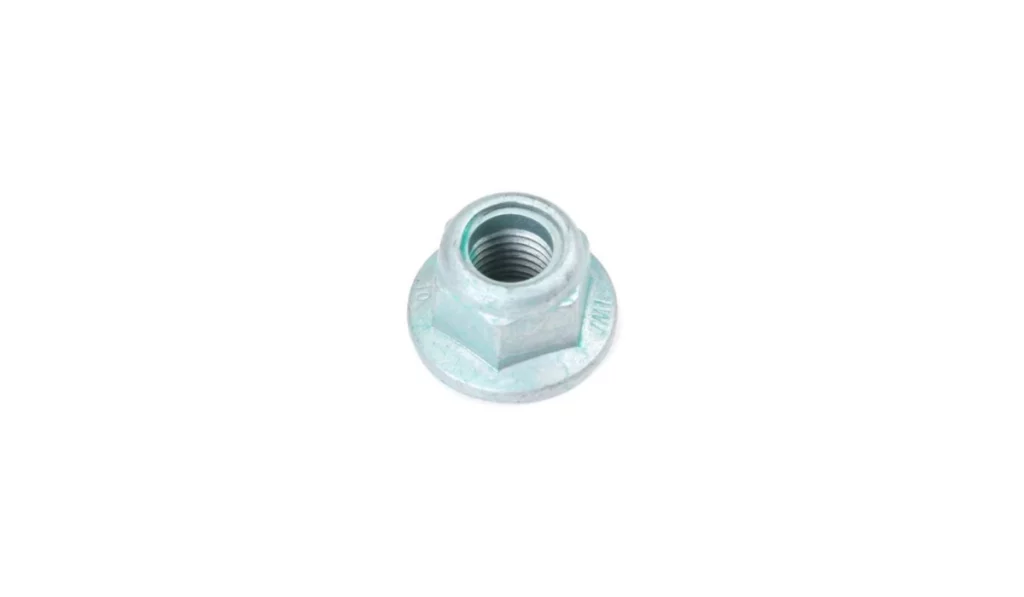
Genuine VW/Audi front lower strut nut N10106402
Routine Inspections — Schedule regular inspections of the suspension system, including the lower ball joints. Check for signs of wear, such as loose or worn ball joints, and ensure they are replaced before they fail.
Road Awareness — Be mindful of road conditions and avoid obstacles that could impact the suspension, such as large potholes or debris.
Tire Maintenance — Keep your tires properly inflated and rotated according to the manufacturer’s schedule. Uneven tire wear can put additional stress on the suspension system.
Weight Management — Avoid overloading your vehicle. Excess weight can put additional stress on the suspension system, particularly on the lower ball joints.
Smooth Driving — Practice smooth driving techniques. Sharp turns, sudden stops, and aggressive driving can increase the wear on your suspension system, particularly the lower ball joints.
By following these preventive measures, you can significantly extend the life of your lower ball joints and maintain the structural integrity of your Audi Q5’s suspension system. This proactive approach ensures your vehicle provides a safe and comfortable driving experience.
Choose eEuroparts.com for Genuine Audi Suspension Parts
When undertaking any repairs or upgrades to your Audi Q5, especially something as crucial as the suspension system, the quality of the parts you use can make all the difference. That’s where eEuroparts.com comes in as your trusted source for genuine Audi and OEM suspension parts. Our extensive inventory includes only the highest quality components that meet or exceed Audi’s standards, ensuring that every auto part offers reliability and performance you can trust.
At eEuroparts.com, we understand the importance of precision in vehicle maintenance. That’s why we offer a tailored selection of suspension parts designed for your Audi Q5, helping you maintain its luxurious ride quality and superb handling characteristics. From lower ball joints to full suspension kits, our parts are engineered to provide the perfect fit and function for your specific vehicle needs.
Shopping with us means accessing top-quality products while enjoying competitive prices and expert customer support. So what are you waiting for? Shop now!


















